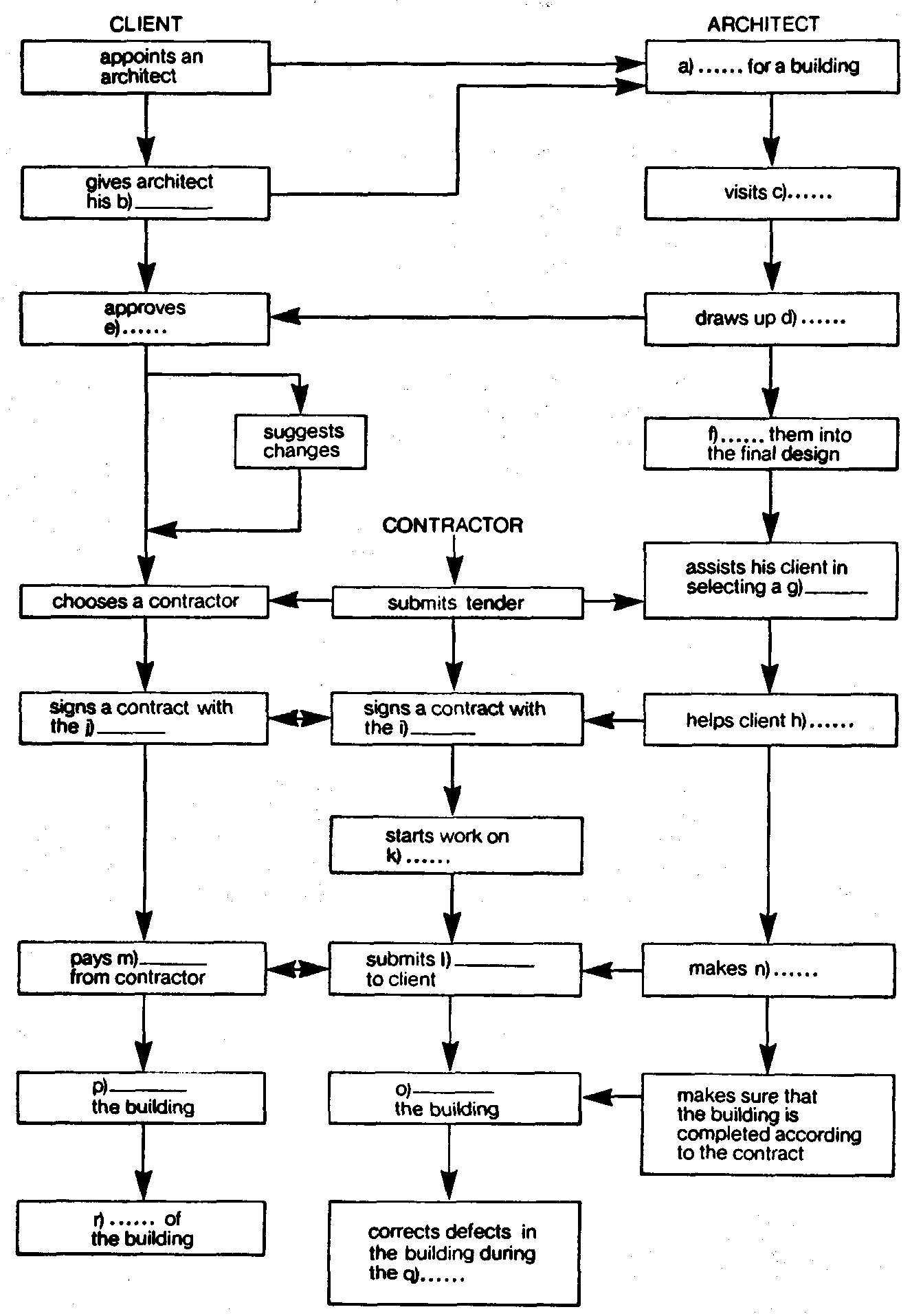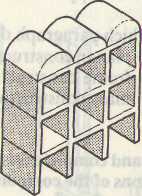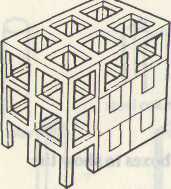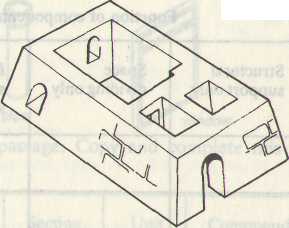
- •Опись учебно-методический комплекс дисциплины
- •Второй год обучения
- •Предметное содержание речи
- •2. Внутренняя и внешняя политика сия и Казахстана.
- •3. Социальные проблемы
- •1. Устные контакты
- •2. Современные проблемы развития избранной отрасли (по специальности).
- •Аудирование
- •Аудирование
- •Итоговый контроль второго года обучения состоит из 2-х частей:
- •Третий год обучения
- •Предметное содержание речи
- •1. Образование и наука.
- •2. Профессиональная подготовка будущего инженера (технического работника) в сия и Казахстане.
- •3. Диалог культур в обучении ия
- •Уровень с2
- •Говорение
- •Письменная речь
- •Аудирование
- •Аудирование
- •1. Сафронова ю.В. - ст. Преподаватель юкгу им.М.Ауезова.
- •2. Карбозова г.К. - к.Ф.Н., доцент юкгу им.М.Ауезова.
- •Министерство образования и науки республики казахстан
- •Рабочая учебная программа
- •1. Цель, задачи и место дисциплины в учебном процессе
- •2. Выписка из учебного плана
- •2.1 Выписка из учебного плана
- •3. Содержание дисциплины
- •3.1. Номера и название лабораторных работ, практических работ, тем семинарских занятий по каждому модулю.
- •3.2. Номера и название срс по модулям
- •History of building and architecture
- •Building materials
- •Structural elements
- •Building and architecture
- •4. Методическое обеспечение дисциплины и тсо
- •5.Дополнения и изменения в рабочей учебной программе на 201__/201__ учебный год в рабочую учебную программу вносятся следующие изменения:
- •1. Цели и задачи дисциплины «Английский язык»
- •2.Политика курса:
- •3. Тематический план практических занятий
- •Module 1.
- •Module 2.
- •5. График выполнения и сдачи заданий
- •6. Список рекомендуемой литературы:
- •6.1 Основная литература
- •1. Цели и задачи дисциплины «Английский язык»
- •2.Политика курса:
- •Тематический план практических занятий
- •Module 3.
- •Module 4.
- •5. График выполнения и сдачи заданий по дисциплине английский язык (рекомендуемый)
- •6. Список рекомендуемой литературы:
- •6.1 Основная литература
- •1. Цели и задачи дисциплины «Английский язык»
- •2.Политика курса:
- •3. Тематический план практических занятий
- •Module 1.
- •Module 2.
- •5. График выполнения и сдачи заданий
- •6. Список рекомендуемой литературы:
- •6.1 Основная литература
- •Входной конроль Put the words in brackets in the possessive case using –‘s or of:
- •The history of building.
- •From the history of building.
- •Vocabulary
- •From the history of architecture.
- •II. Active vocabulary
- •III. Answer the following questions
- •Types of Buildings
- •1. What types of buildings do you know ?
- •2. What do you know about their functions ?
- •3. What do you think about requirements to types of buildings ?
- •I From the list of types of buildings, try to label the drawings below:
- •II. Look at this table and complete the examples:
- •III. Ask and answer questions like the following:
- •IV . Look at this example:
- •I Read the text and tell about types of buildings Types of buildings
- •Vocabulary
- •V With your partner, speak on the different types of buildings
- •Control work
- •Properties and Shapes
- •II. Look at these drawings of two-dimensional shapes:
- •III. Now answer these questions about the drawings in exercise I:
- •I V. Look and read:
- •V. Now describe the shapes of the buildings in exercise I, and compare them with the buildings around you.
- •I. Look at these examples:
- •II. Make sentences about four other properties of materials from this table:
- •III. Answer the following questions:
- •Building materials.
- •1. What is it necessary for the designer to know in order to select the most effective building materials ?
- •2. What do you think about the most widely used material ?
- •I Read and find which passage reveals the content of the title: The Most Important and Widely Used Building Materials
- •Vocabulary
- •Variations - өзгерістер - изменения
- •II Read the text again and find out if the following statements are true or false:
- •III Complete the sentences with the infinitive forms given bellow:
- •IV What passages do the following titles belong to ?
- •V Find verbs to the following nouns:
- •VI Match the translations of the terms:
- •Concrete – a Yearning for the Monolithic
- •Vocabulary List
- •Plastic house looks to the future.
- •I. Read the text and tell about the qualities of plastic.
- •Cement: Man’s miracle mix
- •Control work
- •Vocabulary
- •Circle a), b), or c) to complete the sentences.
- •2.Complete the sentences
- •Exercises
- •Give the Russian equivalents
- •Divide the verbs in the box into two groups: regular or irregular. Give three forms of the verb.
- •Prove the following statements using to the information from the text.
- •Vocabulary
- •1. Complete the sentences.
- •Exercises
- •1. Suggested the Russian equivalents.
- •2. Fill in the gaps with the words from the text.
- •3.Match the beginning of the sentences to their ends using the information from the text.
- •4. Discuss in your group these questions
- •5. Give the English equivalents.
- •Domes and realated elements
- •Vocabulary
- •I. Complete the following sentences
- •II. Choose the right synonym.
- •Exercises
- •I. Suggest the Russian equivalents
- •II. Put the verbs in brackets into appropriate form in the following sentences.
- •III. Make some sentences of your own with these expressions.
- •IV. Fill the gaps with the words from the text.
- •Floor system
- •Vocabulary
- •I. Choose the right word
- •II. Complete the following sentences
- •III. Make the right choice.
- •Exercises
- •I. Match the terms (a) and their definitions (b).
- •II. Explain in English
- •Foundations
- •Vocabulary
- •I. Choose the right form of the adjective.
- •II. Complete the following sentences
- •Exercises
- •I. Suggest the Russian equivalents
- •II. There are some notes the student made after reading the text “Foundation”. Did he remember everything right? Read his notes and correct them if necessary.
- •Vocabulary
- •I. Choose the right verb
- •II. Complete the following sentences.
- •Exercises
- •Architectural design
- •Planning a house.
- •III. Answer the following questions
- •C olours in your home
- •Some building professions.
- •Vocabulary
- •II Match the beginnings (1-5) of the sentences to their ends using group (a-e)
- •III Answer the following questions:
- •IV Translate the following sentences into Kazakh or Russian:
- •Types of building.
- •Control work
- •High-Strength Concrete
- •High - Strength Concrete
- •Vocabulary List
- •I Answer the following questions.
- •II Give synonyms.
- •III True or false?
- •Rendered Facades, but with What Finish? Coloured, Painted or Coated?
- •Vocabulary List
- •I Answer the following questions.
- •II Give definitions to the following words and phrases.
- •Industrial Building Typology
- •Vocabulary List
- •I Answer the following questions.
- •II Give synonyms.
- •Control work
- •1. Make the written translation of the third paragraph of the text.
- •2. Give antonyms.
- •3. Find the English equivalents in the text.
- •Water Supply
- •Water supply
- •Sewerage
- •Sewerage
- •Panel Heating
- •Panel heating
- •Principles of Air-Conditioning
- •Principles of air-conditioning
- •Материалы для самостоятельной работы обучающего Модуль 1 history of building and architecture
- •I’ve chosen building as a career because …
- •Модуль 2 building materials
- •Модуль 3 structural elements
- •Модуль 4 building and architecture
- •Architectural design
- •Модуль 5
- •Модуль 6
- •Материалы для срсп
- •II Use the right prepositions where necessary.:
- •III. Use “some, any, no”:
- •IV. Choose the necessary word given in the brackets:
- •V. Use the verbs given in the brackets in right Tenses:
- •5. Put the following sentences in the negative form:
- •6. Use the verb in the Present Continuous:
- •Причастие (The Participle)
- •Формы Participle I
- •Функции причастия I в предложении
- •To cry, to shake, to shine, to sit, to laugh, to fall, to run, to sleep, to smoke, to wait, to speak, to stand, to follow, to play, to lose, to leave
- •The early houses in Great Britain. Dialogue.
- •The Syntax of the Sentence
- •Participle II
- •1. Определение
- •2. Обстоятельство.
- •Предикативный член
- •Независимый причастный оборот
- •Способы перевода независимого причастного оборота
- •To trust, to bother, to employ, to explain, to wash, to respect, to impress, to cook, to decorate, to dress, to love
- •Страдательный залог (The Passive Voice)
- •Struсtures
- •The dialogue
- •I. Read this:
- •II. Complete this following diagram:
- •III. Problem solving:
- •Present perfect tense
- •VI Put in gone or been.
- •VII Complete these sentences.
- •The Past Perfect Tense
- •1.Read the sentences. In each case, tick (V) which happened first, a) or b). Example
- •2.Make sentences in the past perfect using the verbs in brackets. Example
- •3.Put the verb in brackets into Past Perfect Tense.
- •4.Make the sentences: a) negative b) interrogative.
- •5.Read the sentences. In each case, tick (V) which happened first, a) or b). Example
- •Types of plastics.
- •Epoxy resin
- •Pvc (polyvinyl chloride)
- •Polystyrene.
- •Vocabulary
- •The Future Perfect
- •Инфинитив (the infinitive)
- •Формы инфинитива
- •Инфинитивный оборот с предлогом for
- •The millenium dome
- •Vocabulary
- •I. Choose the right preposition
- •II. Complete the following sentences
- •Exercises
- •I. Suggest the Russian equivalents
- •II. Fill the gaps with the words from the text.
- •IV. Choose the right verb and put it in the right form
- •Terms terminology
- •I. Suggest the Russian equivalents
- •II. Match the terms (a) and their definitions (b).
- •III. Explain in English
- •IV. Discuss with your partner the following questions.
- •V. Ask you r friend to prove that the reinforced-concrete slab has a great advantage over the most earlier systems. Use the following word combinations.
- •Leaning tower of pisa begins to be stabilized.
- •Vocabulary
- •I. Choose the right synonym
- •II. Complete the following sentences
- •Making up a dialogue
- •VI. Agree with the following statements using the appropriate passive form.
- •Discussion of the latest shell structures
- •Visual Vocabulary
- •The Compound Sentence
- •Формы герундия
- •Функция герундия в предложении
- •Перевод герундия
- •Перевод герундия с различными предлогами
- •Perfect tenses
- •The Complex Sentence
- •Grammar revision Ex.1 Compose sentences using verbs from left column:
- •A. Model
- •Trades of building professions
- •I Look and read:
- •Week number
- •II.Read this:
- •III.Complete these sentences with the name of a building trade:
- •IV.Read this:
- •The tools and instruments used in building construction.
- •II. Look at these drawings of instruments:
- •5 Модуль
- •Типы вопросов в английском языке
- •Обороты there is / there are
- •Основные модальные глаголы и их заменители в английском языке
- •Форма и основные функции сослагательного наклонения
- •Неопределенные местоимения some, any, отрицательное местоимение по и их производные
- •Отличие местоимений little и few и местоименных выражений a little и a few
- •Отличие временных групп Indefinite, Continuous и Perfect
- •Согласование времен в главном и придаточном предложениях
- •Преобразование прямой речи в косвенную
- •Материалы по контролю и оценке учебных достижений обучаящихся
- •Экзаменационный билет № 1 по дисциплине « Английский язык»
- •Экзаменационный билет № 2 по дисциплине « Английский язык»
- •Экзаменационный билет № по дисциплине « Английский язык»
- •I. Read the text
- •II. The terms.
- •Экзаменационный билет № по дисциплине « Английский язык»
- •I. Read the text
- •II. The terms.
The dialogue
I. Read this:
When an architect receives a commission for a building, he meets the client and discusses his requirements. After visiting the site, the architect draws up preliminary plans and, together with a rough estimate of the cost, submits them to the client for his approval. If the client suggests changes, the architect incorporates them into the final design which shows the exact dimension of every part of the building. At this stage, several building contractors are invited to bid for the job of constructing the building. When they submit their tenders or prices, the architect assists his chent in selecting the best one and helps him to draw up a contract between the client and the contractor.
Work now starts on the building. As construction proceeds, the architect makes periodic inspections to make sure that the building is being constructed according to his plans and that the materials specified in the contract are being used. During the building period, the client pays the bills from the contractor. Subsequently, the contractor completes the building and the client occupies it. For six months after completion there is a period known as the 'defects hability period'. During this period, the contractor must correct any defects that appear in the fabric of the building. Finally, when all the defects have been corrected, the client takes full possession of the building.
Now find a word or an expression in the passage which means:
to be given the job of designing a building
to offer to a client for his consideration
to combine into a whole
to offer to do some work at a certain price
to look at the building work in detail at regular intervals
named or described exactly
an interval of time after the building has been finished during which the contractor is responsible for correcting any faults in it
h) to have complete ownership of the building
II. Complete this following diagram:

III. Problem solving:
You are an architect you got a commission for a building.
Lesson 10
Look at these diagrams and then read the passage:


Frame construction Planar construction

Mass construction
Building materials are used in two basic ways. In the first way they are used to support the loads on a building and in the second way they are used to divide the space in a building. Building components are made from building materials and the form of a component is related to the way in which it is used. We can see how this works by considering three types of construction:
In one kind of construction, blocks of materials such as brick, stone, or concrete are put together to form solid walls. These materials are heavy, however, they can support the structural loads because they have the property of high compressive strength. Walls made up of blocks both support the building and divide the space in the building.
In another type of construction, sheet materials are used to form walls which act as both space-dividers and structural support. Timber, concrete and some plastics can be made into large rigid sheets and fixed together to form a building. These buildings are lighter and faster to construct than buildings made up of blocks.
Rod materials, on the other hand, ca\n be used for structural support but not for dividing spaces. Timber, steel and concrete can be formed into rods and used as columns. Rod materials with high tensile and compressive strength can be fixed together to form framed structures. The spaces between the rods can be filled with light sheet materials which act as space dividers but do not support structural loads.
Now say which paragraph discusses:
planar construction
frame construction
mass construction
Lesson 11
Copy and complete this table by putting ticks in the boxes to show the functions of the components.
|
Function of components |
||
Form of material |
Structural support only |
Space dividing only |
Both structural support and space dividing |
Blocks
|
|
|
X |
Sheets
|
|
|
|
Rods
|
|
|
|
Now say whether these statements are true or false. Correct the false statements.
Rod materials can be used for both dividing space and supporting the building.
Concrete can be used as a block material, a sheet material, and a rod material.
Steel is used for frame construction because it has high tensile strength and low compressive strength.
The sheet materials, which act as space dividers in a frame construction building, can be very light because they do not support structural loads.
Mass construction buildings are light whereas planar construction buildings are heavy.
Look at the buildings and discuss the basic forms of the materials used to build them.



a hotel an Egyptian a mosque
house



a brick an Arabic a Roman arch
arch



the structure a church a power station
of a factory building


a steel beam a steel channel
Lesson 12
